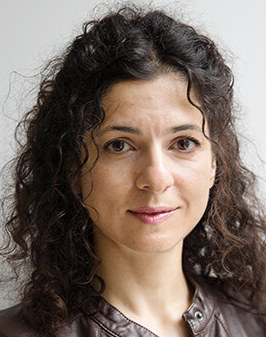Fall 2019 Joint CSC@USC/CommNetS-MHI Seminar Series
 |
Eva Kanso,
University of Southern California
|
Abstract
The oral surface of sea stars is lined with arrays of tube feet that enable them to achieve highly controlled locomotion on various terrains. The activity of the tube feet is orchestrated by a nerve net that is distributed throughout the body; there is no central brain. How such a decentralized nervous system produces a coordinated locomotion is yet to be understood. We developed mathematical models of the biomechanics of the tube feet and the sea star body. In the model, the feet are coupled mechanically through their structural connection to the sea star body. We formulated hierarchical control laws that capture salient features of the sea star nervous system. Namely, at the tube foot level, the power and recovery strokes follow a state-dependent feedback controller. At the system level, a directionality command is communicated through the ring and radial nerves to all tube feet. We studied the locomotion gaits afforded by this hierarchical control system. We found that these minimally-coupled tube feet coordinate to generate robust forward locomotion, reminiscent of the crawling motion of sea stars, on various terrains and under various heterogeneity in the tube feet parameters and initial conditions. Our model also predicted a transition from crawling to bouncing consistent with our experiments performed on Protoreaster nodosus. We conclude by commenting on the implications of these findings for understanding the Echinoderms decentralized nervous system and their potential application to autonomous robotic systems.
Biosketch
Eva Kanso is a professor, and the Zohrab H. Kaprielian Fellow, in Aerospace and Mechanical Engineering at the University of Southern California (USC). Prior to joining USC, Kanso held a two-year postdoctoral position in Computing and Mathematical Sciences at Caltech. She received her Ph.D. and M.S. degrees in Mechanical Engineering as well as an M.A. degree in Mathematics from UC Berkeley. She got her Bachelor of Engineering from the American University of Beirut with distinction. At USC, Kanso studies the physics of how organisms interact with their environments. Kanso combines methods from fluid and solid mechanics with techniques from dynamical systems and control theory to analyze the interplay between the morphology of living systems and the environment to produce biological functions.
